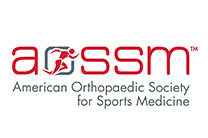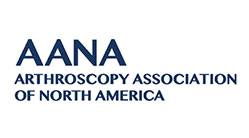Groin injuries are common in athletes who participate in sports that involve quick changes of direction, twisting movements, or explosive acceleration, such as soccer, hockey, and football. These injuries can range from minor groin strains to more severe tears, and can lead to pain and limited mobility. Proper understanding of groin anatomy can help ensure accurate diagnosis, prompt treatment and rehabilitation for a full recovery and return to sports or an active lifestyle.
Groin Muscle Anatomy
The main muscles of the groin are:
Hip flexors: The hip flexor muscles include the iliopsoas, rectus femoris, and sartorius muscles. These muscles are responsible for lifting the thigh towards the abdomen and are used in many different sports, including running, jumping, and kicking. Injuries to the hip flexors are common in sports that require explosive or repetitive movements, such as soccer, football, and martial arts.
Hip Adductors: The adductors are a group of muscles on the inner thigh that move the thigh towards the midline of the body. These muscles include the adductor longus, adductor brevis, adductor magnus, and gracilis muscles. Injuries to the adductors are common in sports that involve sudden changes of direction or twisting movements, such as basketball, hockey, and soccer.
Hip Abductors: The abductor muscles include the gluteus medius and minimus muscles, which move the thigh away from the midline of the body. These muscles are important for stabilizing the pelvis during running and jumping and can become strained or injured in sports that involve a lot of lateral movement, such as tennis or basketball.
Quadriceps: The quadriceps are a group of four muscles on the front of the thigh that are responsible for extending the knee. The rectus femoris muscle, which is part of the hip flexor group, also crosses the hip joint and helps to flex the hip. Injuries to the quadriceps muscles are common in sports that involve jumping or landing, such as basketball and volleyball.
Hamstrings: The hamstrings are a group of muscles on the back of the thigh that are responsible for bending the knee and extending the hip. Injuries to the hamstrings are common in sports that involve explosive movements, such as sprinting or jumping.
Tensor Fasciae Latae: The tensor fasciae latae muscle is a small muscle on the outer hip that helps to stabilize the pelvis during running and walking. This muscle can become strained or injured in sports that involve a lot of running or jumping, such as soccer or basketball.
Causes of Groin Injuries
Groin injuries can result from a variety of causes. Some of the main causes of groin injuries in sports are:
- Blunt Impact Injuries: Groin injuries can be caused by a direct blow to the groin area. This can occur in contact sports, such as football or hockey, where players can collide with each other, or in sports where athletes may accidentally kick or hit the groin area, such as soccer or martial arts.
- Forceful Muscle Contraction: A forceful muscle contraction can also cause a groin injury. This can occur when an athlete is performing a sudden, explosive movement, such as a sprint or a jump, that places a high amount of stress on the groin muscles. This can lead to groin strains or tears in the hip flexors, adductors, or other muscles in the groin area.
- Repetitive Microtrauma: Repetitive microtrauma occurs when an athlete performs the same movement repeatedly, leading to small tears or strains in the muscles and tendons over time. This can happen in sports that involve repetitive kicking, jumping, or twisting, such as soccer or basketball. Over time, these small injuries can accumulate and lead to more significant muscle strains or tears.
Signs & Symptoms of Groin Injury
The common signs and symptoms of groin strains or injuries are:
Pain: Pain is the most common symptom of a groin strain and can range from mild to severe. The location and type of pain can help to determine the type of injury and the muscles that may be involved.
- Injuries to the hip flexors can cause pain and stiffness in the front of the hip or groin area.
- Injuries to the adductor muscles may cause pain on the inside of the thigh or groin area.
- Injuries to the abductor muscles may cause pain on the outside of the hip and thigh.
- Injuries to the quadriceps and hamstrings muscles may cause pain in the front and back of the thigh.
Other signs and symptoms include:
- Swelling: Swelling may be present in the groin area, and can also be an indication of the severity of the injury. Swelling may be more noticeable in some injuries than others.
- Bruising: Bruising or discoloration of the skin may be present in more severe injuries, such as a muscle tear or contusion.
- Stiffness: Stiffness in the hip or groin area may be present, especially when moving the leg.
- Muscle Weakness: Muscle weakness in the groin area can occur due to the injury or as a result of compensating for the injured muscle.
- Difficulty Walking: Depending on the severity of the injury, an athlete may have difficulty walking or may experience a limp.
Athletic Groin Injuries vs Hiatal Hernias
Athletic groin injuries and hiatal hernias are two conditions that can cause pain and discomfort in the groin and abdominal regions. Both can be associated with physical activity or exertion. Groin injuries can often demonstrate signs of a hernia, making them hard to diagnose. Learn about the many key differences between them.
|
Athletic Groin Injuries |
Hiatal Hernias |
|
Caused by physical activity or exertion, such as sports injuries. |
Caused by a weakening in the diaphragm muscle, allowing the stomach to protrude into the chest cavity. |
|
Symptoms include pain in the groin area, swelling, bruising, stiffness, and muscle weakness. |
Symptoms include heartburn, acid reflux, chest pain, difficulty swallowing, abdominal pain, and nausea. |
|
Pain is typically localized to the groin and hip area. |
Pain is located in the upper abdomen and chest. |
|
Risk factors include physical activity, repetitive movements, muscle imbalances, and previous injury. |
Risk factors include age, obesity, pregnancy, smoking, and connective tissue disorders. |
|
Diagnosis is based on physical examination and imaging tests such as ultrasound, MRI, or X-ray. |
Diagnosis is based on upper endoscopy, barium swallow X-ray, esophageal manometry, and pH monitoring. |
|
Treatment may include rest, ice, compression, elevation, physical therapy, and anti-inflammatory medication. |
Treatment may include dietary changes, weight loss, medication to reduce acid production, and surgery. |
Hip Adductor Muscle Injuries
Most athletic groin injuries involve the hip adductor muscles. These are a group of muscles located on the inner thigh that help move the leg towards the midline of the body. The adductor muscles play a key role in many athletic activities that involve running, jumping, and changing direction in sports such as football, hockey, ice hockey, and soccer.
Patients with adductor injuries commonly experience pain in the inner thigh and tenderness in the muscle belly, tendon, or insertion. The pain is worsened by adduction, and tears are often found at the myotendinous junction, which is the weakest part of the muscle-tendon unit. An established grading system for muscle tears is:
Grade 1: A focal area of muscle disruption with no loss of function or strength.
Grade 2: A partial tear and some weakness
Grade 3: Complete muscle tear and loss of function.
Research on Acute Hip Adductor Injuries
Based on the results of 30 studies published between 2001 and 2021 on acute adductor injuries, the most frequent sports that resulted hip adductor injuries were soccer (62%), basketball (14%), futsal (6%), American football (3%), and ice hockey and handball (2%). Risk factors for acute adductor injury were previous acute groin injury, adductor weakness compared with the uninjured side, any injury in the previous season, and reduced rotational hip range of motion. For complete adductor tears, the average time to return to play was 8.9 weeks in patients treated nonoperatively and 14.2 weeks for patients treated surgically. Athletes with partial adductor injuries returned to play 1 to 7 weeks after injury with physical therapy treatment. Nonoperative or surgical treatment is an acceptable option for complete adductor longus tendon tear.1
Core Strengthening for the Groin & Adductors
Core strengthening exercises are an important component of injury prevention and rehabilitation for athletes, particularly those who are at risk of developing groin and adductor muscle injuries. Here are some exercises that can help strengthen the core and the muscles of the groin and adductors:
- Plank: Start in a push-up position with your forearms on the ground and your body in a straight line. Hold for 30 seconds to a minute, then rest and repeat for several sets.
- Side Plank: Lie on your side with your elbow on the ground and your body in a straight line. Hold for 30 seconds to a minute on each side, then rest and repeat for several sets.
- Dead Bug: Lie on your back with your arms and legs in the air. Lower your opposite arm and leg towards the ground, then return to the starting position and repeat with the other arm and leg.
- Clamshell: Lie on your side with your knees bent and feet together. Lift your top knee towards the ceiling while keeping your feet together, then return to the starting position and repeat for several sets.
- Squats: Stand with your feet hip-width apart and lower your body towards the ground, then return to the starting position and repeat for several sets.
If you experience abdominal or groin pain after an acute injury, it is important to seek medical attention to determine the cause of the pain and to receive appropriate treatment. Depending on the severity of the injury, you may need to rest, use ice and compression, and take anti-inflammatory medication. In more severe cases, surgery may be necessary. In case of abdominal or groin pain that worsens over time, this may be indicative of an overuse injury or a more serious condition, such as a hernia or a stress fracture. Treatment may involve rest, physical therapy, or other interventions depending on the underlying cause of the pain.
Dr. Srino Bharam has dedicated his practice and research to understanding and treating complex groin injuries in athletes. As the founder of the Hip and Groin Center in New York, Dr. Bharam is the leading sports medicine specialist for groin injuries in adolescent and adult athletes.
Reference:
- Farrell, S. G., Hatem, M., & Bharam, S. (2021). Acute Adductor Muscle Injury: A Systematic Review on Diagnostic Imaging, Treatment, and Prevention. The American Journal of Sports Medicine. Advance online publication. doi: 10.1177/03635465221140923. PMID: 36661128.














